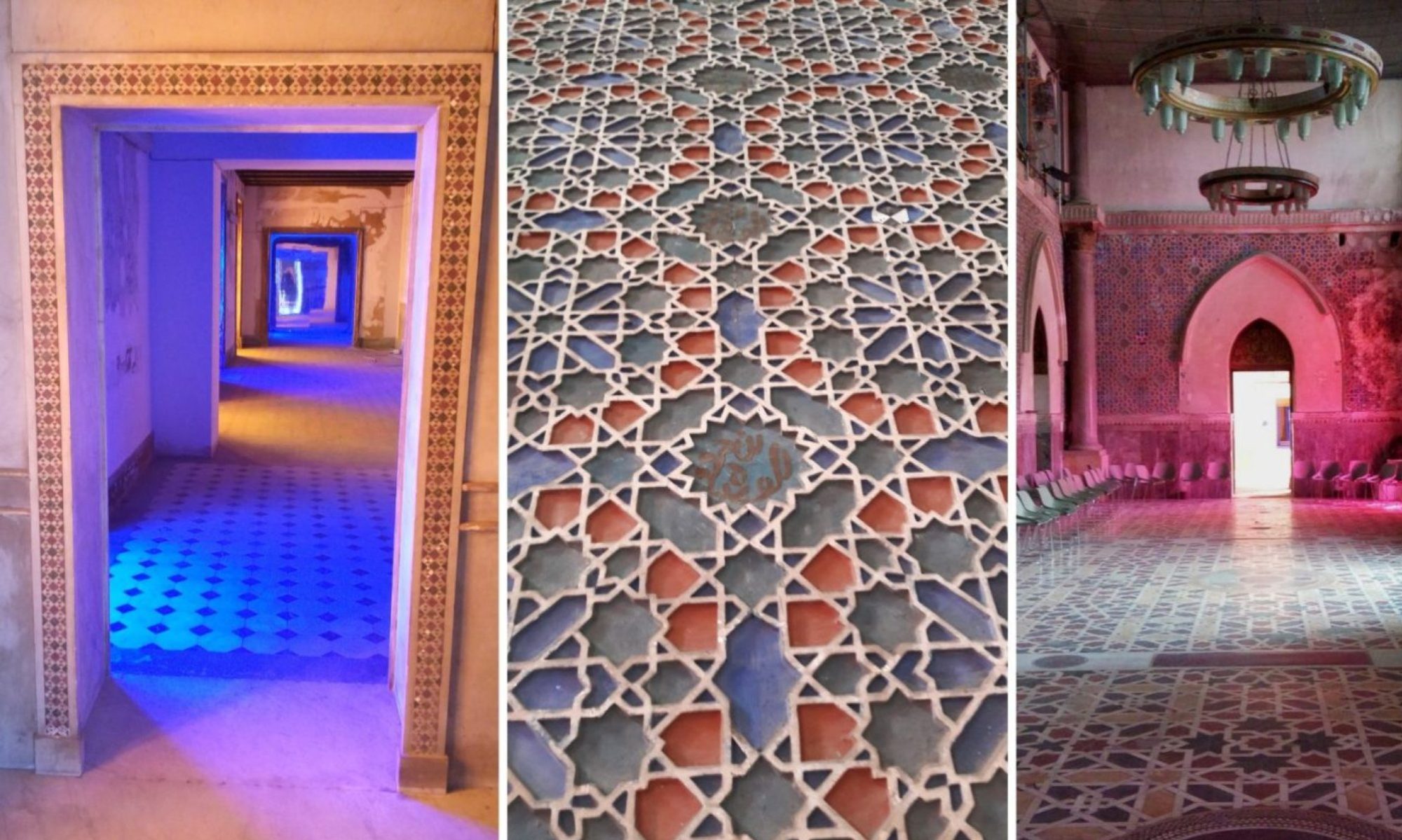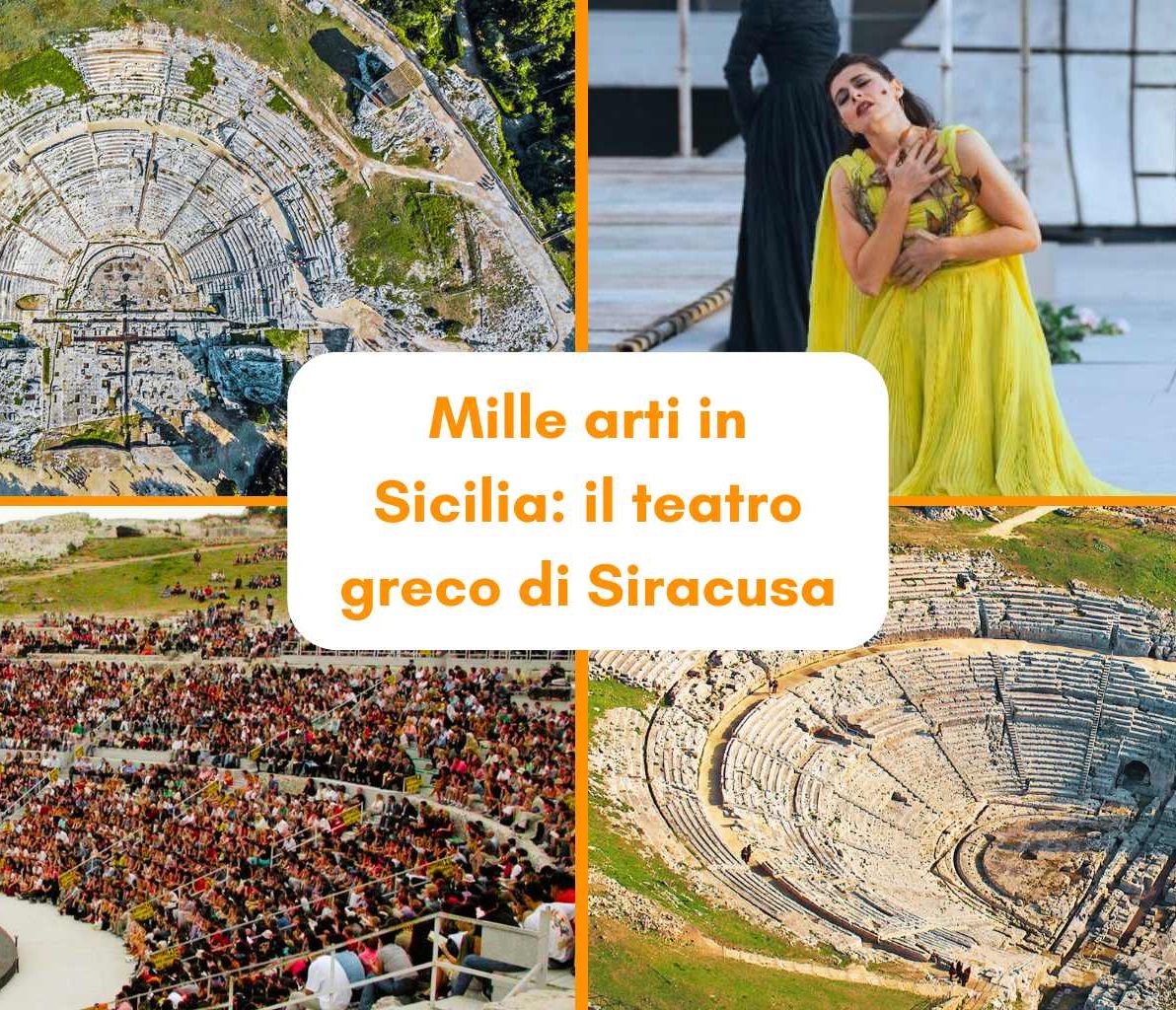Discover the history of Syracuse’s Greek theater: the oldest in Sicily and the occidental countries!
Syracuse, the pearl of eastern Sicily. A city well-known for its archaeological heritage and Baroque beauty, remains an irresistible tourist destination, witness to centuries of Mediterranean civilization and culture.
Founded in 734 B.C. by the Corinthians, it was one of the main centers of Magna Graecia, renowned for its political and cultural power.
The city is also famous for its extraordinary archaeological remains, including the splendid Greek theater, one of the most significant in the world for its grandeur and its role in the history and culture of the entire region.

The origin of the Greek theatre
Let’s start with why humans feel the need to invent theater at some point in history in many societies.
There is a strong link between the origins of theater and religious rituals, leading to highly theatricalized moments: this occurs in archaic and classical Greece, where ritual cults are linked to the god Dionysus, god of drunkenness, wine, but above all god of theater.
Therefore, in the theaters of the Hellenistic age (323 B.C.-31 B.C.E.), there is always an altar, called a “thymèle,” placed in the center of the orchestra to host sacrifices and rituals to Dionysus.
In the later period, there is a shift from a ritual dimension to a ceremony that becomes increasingly untethered from direct ties to the god and is transformed into a theatrical performance charged with the significance of moral values and with an educational function valid for the entire society of the polis.
The fact that it was a collective spectacle, designed for the entire population, meant that the choice of a suitable theatrical site was imposed as a priority; the performance therefore took place in a place located near the acropolis, on the slope of a hill and thus used as a space for the audience a natural slope that ensured proximity to the sacred sites.

The Theatre of Syracuse: a thousand-year artistic heritage
The Greek theater of Syracuse, constructed in the 5th century B.C. to the design of the architect Damocopos, also known as Myrilla for having “myroi” (i.e., ointments) poured at its inauguration, is situated on the southern slope of the Temenite hill.
With a cavea about 138 meters wide, it is one of the largest Greek theaters ever built.
Its strategic location, offering a spectacular view of the harbor and the entire city, was perfect not only for theatrical performances but also for public assemblies and religious ceremonies.
It is, by far, to be considered the oldest theater in the entire occidental countries.
Structure and architecture of the theatre of Syracuse
The cavea, divided into nine sectors by eight staircases, could seat up to 15,000 spectators. The rows of seats were carved directly into the limestone rock, a common feature of Greek theaters that conferred stability and excellent acoustics. In the center of the cavea was the “diazoma“, a horizontal corridor that divided the upper and lower sectors, facilitating spectator access.
The theater had a large “orchestra,” a semicircular space where choirs and dancers performed, and a “scene“, a building in the background where actors could change and store props.
The scene was often decorated with columns and other architectural structures which served as a backdrop for performances.

The theatre of Syracuse: functions and its usage
As we mentioned previously, in addition to theatrical performances, the theater in Syracuse hosted public events such as town assemblies and religious celebrations.
According to Greek tradition, theatrical activity considered a social institution, was accessible to all citizens, including the less affluent, thanks to the “Theoric“, that is, a cash fund specifically created to support such initiatives and ensure access that was truly democratic.
The city of Syracuse, under the leadership of tyrants such as “Hieron I” and “Dionysius the Elder“, became an important cultural center, attracting poets, philosophers, and artists from all over the Greek world.
It was here in 470 B.C. that Aeschylus’ tragedy “The Aetneas” was staged, written to commemorate the re-foundation of Catania as “Aitna” or, it is not very clear, as another center called Aitna, where exiles from Catania found refuge after the destruction of Katane by “Hieron I“.
But the art of Aeschylus was still given hospitality here in Syracuse: even “The Persians“, a tragedy previously performed in Athens in 472 B.C., was staged in this splendid Greek theater.
Theater excavations and restoration
Syracuse’s Greek theater has undergone several restorations over the centuries.
Archaeological excavations begun in the 18th century unearthed much of the original structure, revealing architectural details and sculptures that we can still admire today.
It has been speculated that at the time of its inauguration (5th century B.C.), the theater had not yet assumed the semicircular form, which became common in the late 4th century B.C. and during the 3rd century B.C., but that it may have consisted of rectilinear tiers arranged in a trapezoidal shape.
The theater also underwent renovations in the 3rd century B.C., assuming the form that we can still admire today. As is typical of Greek theatrical structures, an attempt was made in Syracuse to enhance the panoramic view, allowing spectators to enjoy the view of the arch of the harbor and the island of Ortigia, although the stage probably limited this view to some extent.
It is a widely accepted thesis that in the early period of the Augustan age, further significant changes were made: the cavea was transformed into a semicircular shape, in line with Roman theaters, instead of maintaining the horseshoe shape typical of Greek theaters. A new curtain pit was also excavated, with a dedicated maneuvering chamber… How “advanced” these Greeks were!

During the late Roman Empire period, further modifications were made to adapt the orchestra for water shows, and the stage was probably moved backward. There is no evidence, however, of adaptations to accommodate gladiator fights or animal shows, which probably continued to be held in the amphitheater, which had been present in Syracuse since the Augustan period.
After remaining in a state of neglect for many centuries, the theater in Syracuse underwent a process of gradual depredation from the beginning of the 16th century AD by Emperor Charles V, who had the stone blocks used to erect new fortifications around the Island of Ortigia.
In the second half of the 16th century, Pietro Gaetani, Marquis of Sortino, financed the restoration of the ancient aqueduct that supplied water to the top of the theater; this favored the establishment of several mills installed on the cavea, one of which can still be seen today and is known as the “millers’ cottage“.
In 1914, the INDA (Istituto Nazionale del Dramma Antico) began its annual performances of Greek plays at the ancient theater.
The first play to be performed was “Agamemnon” by Aeschylus.
After a hiatus caused by World War I, classical performances resumed in 1921 with Aeschylus’ “Coephoras“.
Since 2010 the site has been part of the Neapolis Archaeological Park, an area that also includes other important monuments of ancient Syracuse.
Occasionally, the theater has hosted extraordinary events, including concerts by Lucio Dalla and Gianni Morandi, who concluded their tour in Syracuse on October 2, 1988, live on the main national TV station.
Many artists have graced this historic stage; in 2002, Fiorello’s comedy show found a home here as well as concerts by Claudio Baglioni, Elisa, and Gianna Nannini in 2022.

The theatre today
Today, the theater in Syracuse continues to live on as a place of culture and entertainment.
Every year, the National Institute of Ancient Drama organizes a theater season that features performances of classical tragedies and comedies, perpetuating a tradition dating back more than two thousand years.
These performances, which attract visitors from all over the world, offer a unique opportunity to experience the excitement of ancient theater in an extraordinarily authentic setting.
In addition to experiencing the theater during the performances, it is also possible to visit it by purchasing a ticket to visit the archaeological park.
Super contemporary art: the 2024 theater season
This year’s Syracuse theater calendar for classical plays includes the staging of:
– “Fedra Ippolito portatore di Corona” – tragedy by Euripides (from 21/05/2024 to 28/06/2024);
– “Aiace” – tragedy by Sophocles (from 05/22/2024 to 06/07/2024);
– “Miles Gloriosus” – comedy by Plautus (from 13/06/2024 to 29/06/2024).

Experience one of the classical plays organized by INDA and be captivated by the intensity of Aeschylus’ tragedies or the liveliness of Plautus’ comedies; each performance will offer you not only entertainment of the highest level but a true journey into the soul and art of Greek culture!
For those who love music and performing arts, the Greek theater also hosts unique concerts and shows, creating a perfect blend of ancient and modern art, such as “Horai le quattro stagioni“, a show by Giuliano Peparini, with music by Antonio Vivaldi and Domenico Scarlatti, and the ballet show “Roberto Bolle and friends”.
Check the Syracuse Greek Theater website for show information and reservations.
Syracuse’s Greek theater, witness to more than two millennia of history and culture, continues to shine as a jewel of antiquity in the heart of Sicily. Don’t miss the opportunity to visit one of the oldest and most evocative theaters in the world, where you can immerse yourself in the excitement of ancient theater and be captivated by timeless art and beauty!


